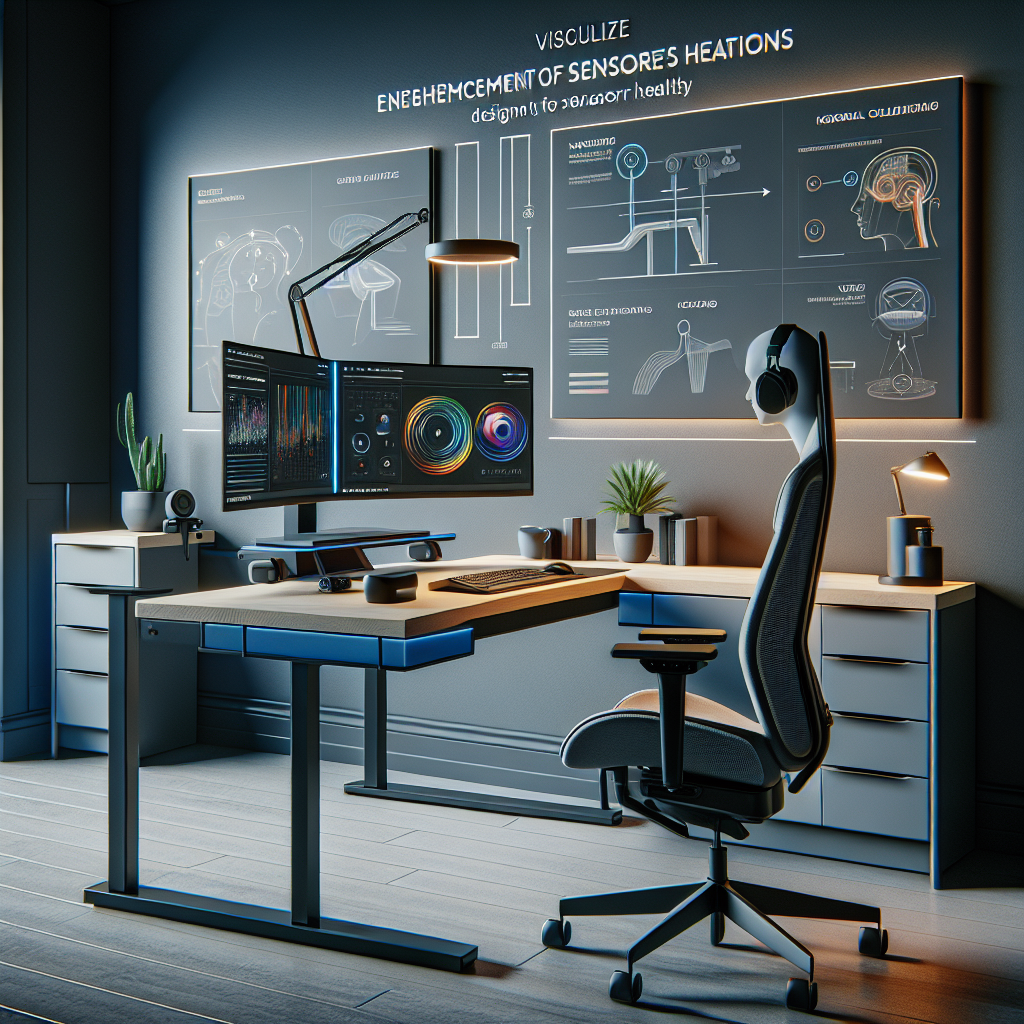Occupational health and safety is a multidisciplinary field concerned with the safety, health, and welfare of people at work. The goal of occupational health and safety programs is to foster a safe and healthy work environment. As part of this, sensory health plays a crucial role. Sensory health refers to the effective functioning of the five senses: sight, hearing, taste, smell, and touch. These senses are critical as they help employees engage with their environment and perform their tasks effectively.
The Importance of Sensory Health in the Workplace
Sensory health is often overlooked in the context of occupational health and safety, yet it is a key component of an employee’s overall well-being and ability to perform at work. Sensory impairments can lead to decreased productivity, increased errors, and higher accident rates. For instance, poor lighting can strain the eyes, leading to visual fatigue, while constant loud noise can cause hearing loss over time.
Understanding the link between sensory health and workplace productivity is essential. In a study on office ergonomics, researchers found that better sensory environments could improve concentration and efficiency among workers. This highlights the need to create workplaces that support sensory health.
Visual Health
Good lighting is essential for visual health. Insufficient light can lead to eye strain and headaches, impacting an employee’s ability to focus and work efficiently. Conversely, too much light or glare can also cause discomfort. Thus, it’s important to find a balance and use lighting that mimics natural light as much as possible.
Auditory Health
Noise control is another critical aspect of occupational health and safety. Prolonged exposure to high noise levels can result in permanent hearing loss. Implementing noise reduction strategies, such as acoustic panels or providing personal protective equipment like earplugs, can help preserve employees’ auditory health.
Olfactory and Gustatory Health
While often less acknowledged, the sense of smell and taste can be impacted by workplace exposures. For example, exposure to chemicals can affect these senses and lead to health issues. Ensuring proper ventilation and air quality can minimize these risks.
Tactile Health
The sense of touch is vital, especially for those working with their hands. Vibrations and repetitive motions can lead to conditions such as carpal tunnel syndrome. Ergonomic tools and regular breaks can help protect tactile health.
Sensory Health and Specific Occupational Needs
Every occupation has different sensory demands. For example, a graphic designer will have different visual requirements compared to a construction worker. It is crucial to assess the specific sensory demands of each role and tailor the occupational health and safety measures accordingly.
For more detailed insights on sensory health, consider reading about Sensory Health on the Avix Health website.
Creating a Sensory-Friendly Workplace
Creating a sensory-friendly workplace involves considering the needs of all employees, including those with sensory processing disorders or sensitivities. This includes:
-
Designing Ergonomic Workspaces: Workspaces should be designed to reduce strain on the senses. This includes adjustable lighting, noise reduction strategies, and ergonomic furniture to support posture and reduce the strain on the body. The article on Best Practices for Sensory-Friendly Retail Environments provides additional insights on creating spaces that accommodate sensory needs.
-
Regular Health Screenings: Employers should offer regular health screenings to identify any sensory impairments early on. Early detection can help in managing conditions more effectively.
-
Providing Sensory Breaks: Regular breaks can help employees recharge and reduce sensory overload. This is especially important in high-intensity environments.
-
Training and Education: Employees should be trained on the importance of sensory health and how to protect their senses at work.
Addressing Sensory Health Challenges
Some employees may face specific sensory health challenges, such as those with autism spectrum disorders or ADHD. The workplace can be particularly challenging for these individuals. Providing access to sensory rooms or quiet spaces can help them manage sensory input and perform their best at work. For more information, the article on The Role of Sensory Integration in Autism Spectrum Disorders offers valuable insights.
Leveraging Technology for Sensory Health
Advancements in technology offer new ways to support sensory health in the workplace. For instance, noise-cancelling headphones can help individuals work in noisy environments without being distracted. Software that adjusts screen brightness and color based on time of day can help reduce eye strain.
Best Practices from Other Fields
There is much to learn from fields that have traditionally paid close attention to sensory considerations. For example, The Benefits of Sensory Engagement in Museum Design can provide inspiration for creating engaging and comfortable workspaces.
External Resources for Further Reading
- A comprehensive guide on workplace ergonomics by the Occupational Safety and Health Administration (OSHA) can help in designing workspaces that promote sensory health.
- The American Academy of Audiology provides resources on protecting auditory health in the workplace.
- Research published in peer-reviewed journals like Ergonomics offers insights into the latest findings on workplace design and sensory health.
Conclusion
Sensory health is an integral part of occupational health and safety. By understanding the role of the senses in the workplace, employers can create environments that support employees’ well-being and productivity. Implementing sensory-friendly design principles, providing necessary accommodations, and staying informed through resources can make a significant difference in employees’ occupational health.
Creating a workplace that is mindful of sensory health is not only beneficial for employees but also for the organization as a whole. A sensory-healthy work environment leads to happier, healthier, and more productive employees, ultimately contributing to the success of the business.



